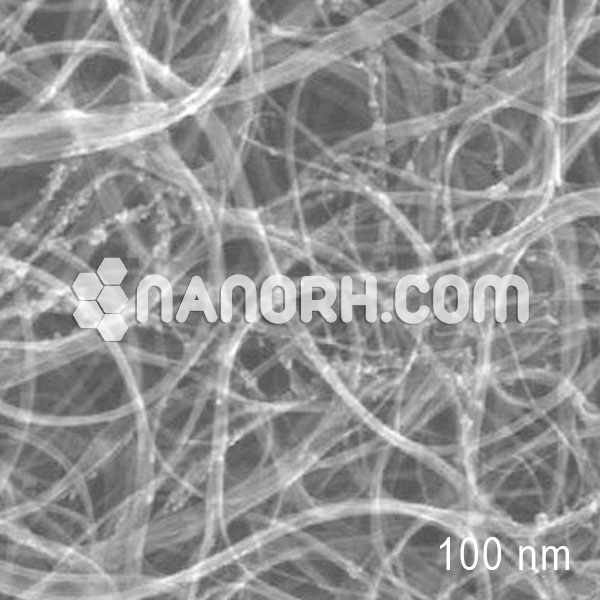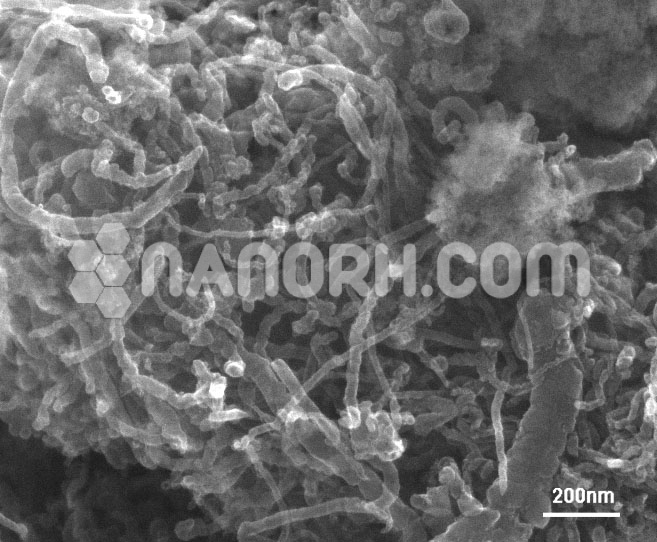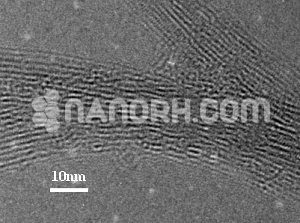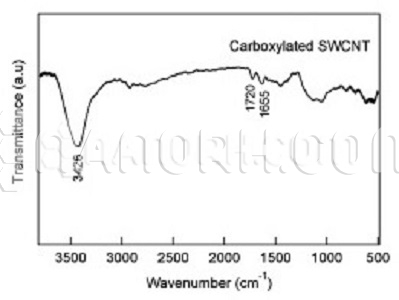| MWCNTs N-butanol Dispersion | |
| Product No | NRE-36018 |
| CAS No. | NA |
| Purity | > 95 wt% |
| Average Diameter | 20-30 nm |
| Average Length | 10-30 um (TEM) |
| Special Surface Area(SSA) | > 110 m2/g (BET) |
| Tap Density | 0.28g/cm3 |
| True Density | 2.1 g/cm3 |
| Electric Conductivity | > 100 S/cm |
Multi-Walled Carbon Nanotubes
MWCNTs N-butanol dispersion are advanced nanostructures composed of multiple concentric layers of carbon atoms, arranged in a cylindrical formation. Each layer can be thought of as a rolled-up sheet of graphene, resulting in a structure that can have two or more walls, which contributes to their unique mechanical, electrical, and thermal properties.
MWCNTs N-butanol dispersion are known for their exceptional tensile strength, high electrical conductivity, and impressive thermal conductivity, making them valuable in various applications. Their mechanical properties are significantly enhanced due to the multiple layers, allowing them to withstand greater stress compared to single-walled carbon nanotubes (SWCNTs). The synthesis of The synthesis of MWCNTs can be achieved through several methods, including chemical vapor deposition, laser ablation, and arc discharge. Each synthesis technique affects the structural quality and purity of the nanotubes. Can be achieved through several methods, including chemical vapor deposition, laser ablation, and arc discharge. Each synthesis technique affects the structural quality and purity of the nanotubes.
MWCNTs N-butanol Dispersion Application:
Nanocomposites: N-butanol-dispersed MWCNTs can be incorporated into polymers and other materials to enhance mechanical strength, electrical conductivity, and thermal stability. These nanocomposites are suitable for use in automotive, aerospace, and construction industries.
Electrochemical Devices: In energy storage applications, such as batteries and supercapacitors, n-butanol helps create a uniform dispersion of MWCNTs in electrode materials, improving charge storage capacity and cycling stability.
Sensors: MWCNTs dispersed in n-butanol are used in the development of gas and biosensors. The solvent aids in achieving a stable distribution, enhancing sensitivity and response time to various analytes.
Catalysis: N-butanol can be used to disperse MWCNTs for catalytic applications, including in fuel cells and environmental remediation. The dispersion improves the accessibility of active sites on the nanotubes.
Thermal Management: MWCNTs dispersed in n-butanol can be integrated into thermal interface materials to improve heat transfer in electronic devices, helping to manage heat more effectively.
Biomedical Applications: N-butanol can facilitate the functionalization of MWCNTs for drug delivery systems. This helps improve the stability and effectiveness of therapeutic agents in targeted delivery applications.
Coatings: MWCNTs in n-butanol can be used to create coatings that enhance the electrical and thermal properties of surfaces, making them suitable for protective and functional applications.




